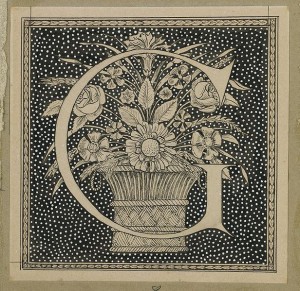Gangrene: Instant mortification, a term applied to the death of tissues, following disease of the part, which becomes black and void of sensation. Amputation beyond the seat of mischief is nearly always essential.
Giants: The greatest known giants of the nineteenth century were a Finlander, 112 inches tall; an Australian, 103 inches, a Kalmuck and an Irishman, each 100. The greatest racial averages are the Scotch of Galloway, 71 inch; Scotch, 69.5 inch; Patagonian, Cheyennes, Fulahs, Sikh, 69 inch.
Gloves: An article of luxury in warm countries, of necessity, in protection of the hand, for laborers and drivers in the far north. They are universal among Eskimos, and were used by the cave-men. They were an article of magnificence in the Middle Ages. Gloves are made of kid or lamb-skin (hard to distinguish); doeskin, dogskin, buckskin. The nineteen pieces of a good glove are sewed by machine. Cutting is difficult, and descends in families. Out of 409 manufacturers in the United States 166 center around Gloversville, N.Y., where the trade was introduced by Sir Wm. Johnson, 1760.
Golf: A golf field or links is a tract of flat or rolling turf of 3 to 5 miles. There are 18 holes, 4 1/2 inches in diameter, at distances of 100 to 500 yards, each surrounded by a smooth putting green, 60 ft. square. Each player has a putting ball, and an assortment of of beech or hickory golf-sticks, often shod with iron. The competitors play in turn until one drives his ball in the first hole. Then they all begin again for the second, and the one who makes most holes wins. President Taft says: “If men over fifty, who are in need of something and do not know what, will organize a golf-club and chase balls around 6,000 yards every afternoon, they will grow a great deal more contented with life.”
Gypsies: A wandering Hindu tribe, as can be proved by their language, who roamed into Eastern Europe with the Tartars in the fourteenth century, and have remained a rambling, tinkering, horse-trading and shoeing, poaching, fortune-telling race in every land. The French called them Bohemians, the English, The Egyptians or Gypsies.
•Taken from the 1912 Standard Illustrated Book of Facts.
See also

